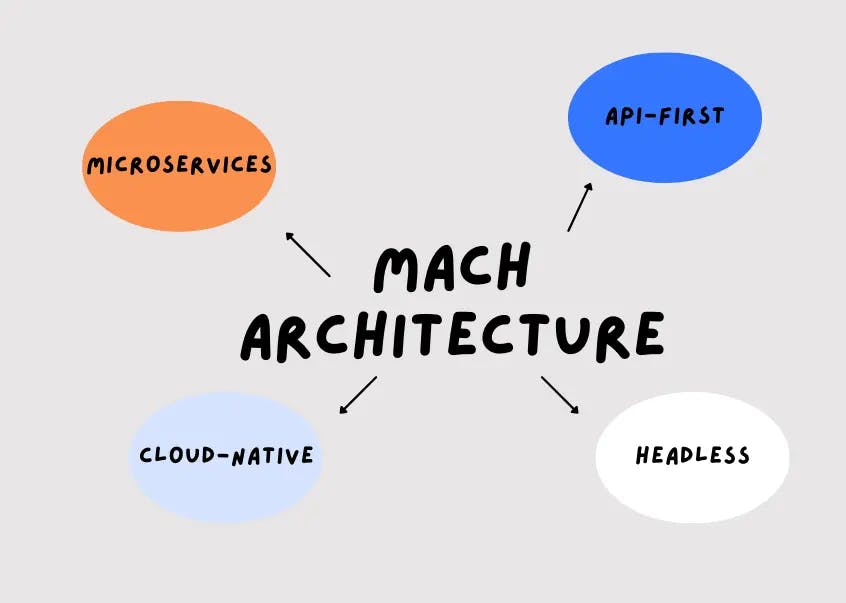Legacy Systems Hinder Innovation: How WebriQ's StackShift Can Help Your Digital Transformation

Legacy systems, those built with outdated technologies and software, were once the building blocks that powered businesses. While they served us well in their early days, these aging systems are increasingly becoming a burden.
Maintaining these legacy systems, often referred to as outdated systems, outdated software, legacy technology, or old systems, can be a time-consuming and expensive task. These outdated technologies struggle to keep pace with the rapid advancements in the digital world, creating significant challenges for any business looking to innovate and stay competitive.
The key to success in the digital age lies in digital transformation. This process involves adopting new technologies and functionalities to improve business processes, enhance customer experiences, and ultimately build a future-proof foundation.
However, many businesses are hindered in their digital transformation efforts by their existing systems – a web of outdated hardware, software, and legacy technologies.
These legacy systems often operate in isolation, creating data silos that make them difficult to integrate with modern technologies and innovative solutions like cloud computing, artificial intelligence (AI), and mobile apps. This incompatibility hinders a business's ability to leverage the latest advancements and ultimately stifles innovation.
In this article, we'll delve deeper into how legacy systems specifically hinder innovation and explore the roadblocks they create for businesses looking to thrive in the digital age. We'll also introduce WebriQ's StackShift platform, a powerful solution designed to help businesses overcome these challenges and unlock their full innovation potential.
The Roadblock: How Outdated Systems Hinder Innovation

Inflexibility and Integration Issues:
Legacy systems, built on outdated technology, were never designed for the agility and adaptability required in today's digital landscape. Their rigid architecture struggles to integrate seamlessly with modern solutions like cloud computing, SaaS offerings, and AI-powered tools. This creates data silos, where information remains trapped within the legacy system, unable to be accessed or utilized by newer platforms.
Imagine a business leader with a brilliant idea for a new mobile app, but their old system and existing infrastructure can't communicate effectively with the app development platform, hindering progress. This inflexibility stifles innovation and prevents businesses from leveraging the full capabilities of modern technologies that could give them a competitive edge.
Maintenance Costs and Security Risks:
Maintaining legacy systems is a growing financial burden. Finding qualified technicians to support these outdated technologies becomes increasingly difficult as the industry moves forward. Additionally, patching vulnerabilities and ensuring ongoing security becomes a constant battle.
Legacy systems are often riddled with security risks due to their outdated code and lack of ongoing updates. This makes them a prime target for malicious actors, putting sensitive business data and customer information at risk. These constant security concerns force businesses to divert resources away from innovation and digital transformation initiatives.
Limited Scalability and Performance:

Legacy systems were designed for a different era, often struggling to handle the ever-growing volume of data and user demands of a modern business. As data storage needs increase and user traffic surges, these systems can become sluggish and unreliable, impacting overall business performance. This can lead to frustrating user experiences, lost sales opportunities, and decreased employee productivity.
Imagine an e-commerce platform built on a legacy system experiencing a holiday rush. The outdated infrastructure buckles under the weight of online traffic, causing website crashes and lost sales for the business. This lack of scalability hinders a company's ability to grow and adapt to changing market conditions.
Stifling Creativity and Employee Morale:
Working with slow, outdated technology can be incredibly demotivating for employees. Complex user interfaces, cumbersome workflows, and frequent system crashes can eat away at employee morale and hinder creative problem-solving.
Legacy systems often lack the flexibility to support modern development methodologies like agile and iterative approaches. This stifles innovation and prevents employees from reaching their full potential.
Imagine a team of talented developers forced to work within the constraints of a legacy system. Their ability to experiment, iterate, and build innovative solutions is severely limited, ultimately impacting customer expectations and the success of the entire business.
The Solution: Unleashing Innovation with WebriQ's StackShift (Powered by MACH Architecture)

Introduction to MACH Architecture:
The answer to overcoming legacy system roadblocks lies in embracing a modern technology approach – the MACH architecture. MACH is an acronym representing four key principles: Microservices, API-first, Cloud-native, and Headless.
- Microservices: Imagine breaking down a complex legacy system into smaller, independent, and easily manageable service components. This allows for faster development cycles, easier updates, and greater flexibility in integrating with new technologies.
- API-first: APIs (Application Programming Interfaces) act as the glue that binds everything together. A MACH architecture prioritizes building APIs first, allowing different systems to communicate seamlessly regardless of the programming language or platform. This eliminates data silos and fosters a more integrated digital ecosystem.
- Cloud-native: Legacy systems are often tethered to on-premise hardware limitations. A cloud-native approach leverages the scalability and cost-effectiveness of cloud computing platforms. This allows businesses to easily scale resources up or down as needed, ensuring their technology infrastructure can adapt to changing demands.
- Headless: Traditionally, content management systems (CMS) bundled the presentation layer (how content is displayed) with the back-end functionality (content creation and storage). A headless CMS decouples these aspects. This allows businesses to choose the best presentation layer for each channel (web app, mobile app, etc.) while still managing content centrally. This flexibility empowers businesses to deliver exceptional customer experiences across all their digital touchpoints.
WebriQ's StackShift Platform:
WebriQ's StackShift platform is a powerful solution designed to help businesses embrace a MACH architecture. StackShift acts as a foundation for building modern digital experiences. It provides a suite of tools and services that address the specific challenges of legacy technology.
- Inflexibility and Integration Issues: StackShift's API-first approach eliminates data silos and fosters easy integration with new platforms. Business leaders can now implement innovative ideas like mobile apps without limitations imposed by legacy systems.
- Maintenance Costs and Security Risks: By leveraging cloud-native architecture, StackShift reduces the burden of maintaining outdated infrastructure. Additionally, its modern security features minimize vulnerabilities and keep business data safe.
- Limited Scalability and Performance: StackShift's cloud-based design allows for effortless scaling to meet growing data demands and user traffic. This ensures optimal performance and a smooth user experience for customers.
- Stifling Creativity and Employee Morale: StackShift simplifies content management and workflows, reducing reliance on technical expertise. This frees employees to focus on creative endeavors, fostering collaboration and boosting morale.
Benefits of StackShift for Innovation:
By embracing a MACH architecture with StackShift, businesses can unlock a multitude of benefits that drive innovation.
- Faster Development Cycles: The flexibility and modularity of a MACH architecture enable faster development cycles. New features and functionalities can be built and deployed more quickly, allowing businesses to keep pace with the ever-changing digital landscape.
- Reduced Technical Debt: Legacy systems create a constant burden of technical debt. StackShift helps businesses move away from outdated technologies and embrace modern solutions, reducing the need for costly maintenance and upgrades. These freed-up resources can then be directed towards innovation and strategic initiatives.
- Empowered Employees: StackShift's user-friendly interface empowers everyone, regardless of technical background, to manage content and workflows. Reduced maintenance needs and training burdens free up time for collaboration, creating a streamlined environment where all employees can contribute effectively.
- WebriQ: Your Expert Partner in Digital Transformation: WebriQ's dedicated team of experts goes beyond just providing a platform. They become your trusted partner in digital transformation. They meticulously design and develop your infrastructure to perfectly suit your business needs, ensuring smooth integrations with existing systems and prioritizing security every step of the way.
In conclusion, WebriQ's StackShift, built on the principles of MACH architecture, offers a powerful solution for businesses seeking a new platform to break free from the limitations of legacy systems and unlock their full innovation potential.
Charting Your Course to Innovation: A Final Word

Legacy systems, once the reliable workhorses of yesteryear, are now a barrier to progress. Their inflexibility, high maintenance costs, and security vulnerabilities hinder innovation and limit a business's ability to compete in today's dynamic digital landscape. For business leaders seeking to unlock their full potential and drive future success, digital transformation is no longer optional – it's essential.
WebriQ's StackShift platform, built on the innovative MACH architecture, offers a powerful solution for overcoming these challenges. StackShift acts as a foundation for building a modern and adaptable technology stack, free from the constraints of legacy systems. Imagine a business ecosystem where mobile and web apps, and other systems seamlessly integrate, data flows freely, and development teams can leverage modern tools and APIs to build innovative solutions quickly and cost-effectively. This is the power of StackShift.
By embracing a MACH architecture with StackShift, businesses can unlock a multitude of advantages:
- Reduced Costs: StackShift eliminates the high costs associated with maintaining legacy systems and facilitates the integration of cost-effective SaaS solutions.
- Enhanced Agility: The modularity and flexibility of MACH enable faster development cycles and a more iterative approach, allowing businesses to adapt to changing market demands quickly.
- Unleashing Innovation: StackShift empowers developers and fosters a culture of innovation, freeing them to experiment and build the solutions that will drive future success.
- Superior Customer Experiences: By delivering seamless experiences across all digital touchpoints, businesses can build stronger customer loyalty and gain a competitive edge.
Don't let legacy systems hold your business back from achieving its full potential. Take the first step towards a more innovative future. Contact WebriQ today to explore how StackShift can empower your digital transformation journey and unlock the competitive advantage you deserve.